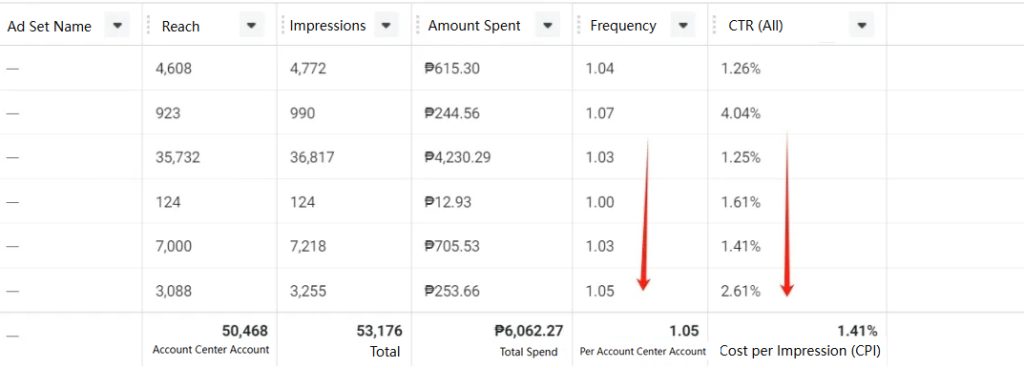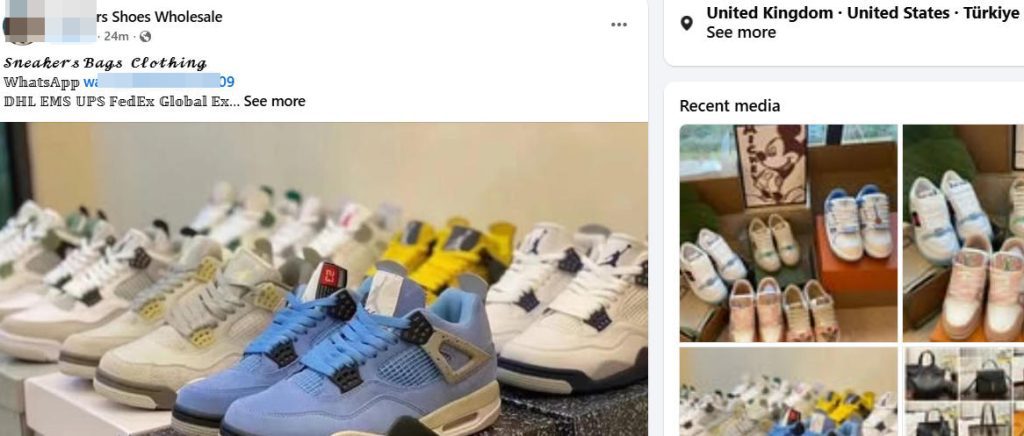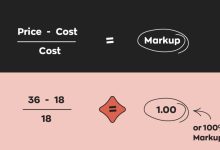For friends running replica Meta ads, ROI is always a top concern—most check their ROI reports daily. Unlike regular e-commerce Facebook campaigns, replica products usually have higher order values, making it easier to achieve strong ROI. In the industry, an ROI of 2.8 is considered average, 5 is excellent, and in practice, I often see clients reaching 8 or even 10, thanks to their long-term experience and optimization.
Experienced advertisers have definitely encountered this: an ad that was performing very well suddenly sees a continuous drop in ROI. It may seem puzzling, but there’s a reason—your ad might have entered a fatigue period, causing its performance to decline.

Ads entering a fatigue period usually show two key signs:
-
Frequency is increasing
-
Click-through rate (CTR) is decreasing
If your ad clearly shows both, especially a sharp drop in CTR—for example, from 10% down to 5%—then it’s very likely in a true fatigue stage. The same audience is seeing your ad repeatedly, leading to ad fatigue, lower engagement, and inevitably a continuous drop in ROI.
Reasons for Ad Fatigue
1). Small Audience Size
Audience size is influenced by region, placement, budget, and interests. Setting it correctly requires a scientific approach: too large an audience can quickly exhaust your budget, while too small an audience may lead to ad fatigue. Effectively combining these four factors is a key skill for experienced advertisers. Due to space, we won’t dive deeper into each factor here.

2). Lack of Creative Assets
Facebook is a creative-driven platform. Display ads heavily rely on engaging visuals, so the quality of your creative assets directly affects performance. Official best practices recommend refreshing your ad creatives at least once a week to maintain engagement.

How to Handle Ad Fatigue
1). Evaluate Your Ads and Decide Whether to Keep Them
Based on historical ROI metrics and ad performance, you need to assess each ad.
-
If an ad initially performs poorly (e.g., ROI < 3), it has little reuse value—stop it and create a new ad.
-
If an ad initially performs well (e.g., ROI ≈ 5) but later declines due to fatigue, it enters the ad adjustment phase.
2). Adjust Your Audience
For ads that performed well initially, your ad pixel has accumulated valuable data. You can adjust the audience to reuse the pixel, find similar users, and improve performance.
-
Adjust audience size scientifically, considering budget, placement, and interests.
-
Expand the original audience by about 30% to show your ad to new users.
3). Refresh Your Creative Assets
New creatives should emphasize fresh ideas, eye-catching colors, strong call-to-action copy, and highlight your product advantages and services.
-
If you don’t have a creative team, you can use SPY tools to reference and adapt successful creatives.
Once an ad enters a fatigue period, using these three strategies—evaluate & replace, adjust audience, refresh creatives—can significantly improve ROI.
Key Insight: Ad fatigue is primarily driven by creative exhaustion, because Facebook is a creative-driven platform. Maintaining fresh, high-quality creatives—either by producing new assets or adapting via SPY tools—is essential.
Other signs of ad fatigue include sudden increases in CPM, in addition to frequency and CTR changes. In practice, understanding these ad metrics thoroughly and forming a holistic diagnostic approach is crucial for effective campaign management.
 Custom E-commerce Solutions for High-Quality Designer-Inspired Fashion Replicas | Website Development, Dropshipping, Payment Integration for PayPal and Stripe, Ad Cloaking Services
Custom E-commerce Solutions for High-Quality Designer-Inspired Fashion Replicas | Website Development, Dropshipping, Payment Integration for PayPal and Stripe, Ad Cloaking Services



























![5 Best WordPress Themes for Replica Product International Trade Websites [Recommended]-Custom E-commerce Solutions for High-Quality Designer-Inspired Fashion Replicas | Website Development, Dropshipping, Payment Integration for PayPal and Stripe, Ad Cloaking Services](https://replicasmaster.com/wp-content/uploads/2025/06/1-1-220x150.jpg)
